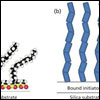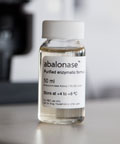 |
|
| |
| Featured Article |

|
Debby Mangelings, LCGC's 2016 Emerging Leader Award Winner, Focuses on Chiral Separations
Debby Mangelings, the winner of the 2016 LCGC Emerging Leader in Chromatography award, is an associate professor in the Department of Analytical Chemistry and Pharmaceutical Technology at the Vrije Universiteit Brussel, in Brussels, Belgium. Mangelings's work has focused primarily on chiral separations. She recently spoke to LCGC about her scientific background, interests, and recent work. |
|
|
| LCGC TV |

|
The 21 Tesla FT-ICR Mass Spectrometer: Maxing Out?
Alan G. Marshall from the National High Magnetic Field Laboratory at Florida State University recently designed and built the first 21 Tesla FT-ICR mass spectrometer. In the latest clip from LCGC TV, he discusses how the technique is developing and his hope for its growth.
|
|
|
| The HPLC 2016 Previews—Trends In Separation Science |

|
New Materials for UHPLC Analysis of Monoclonal Antibody Drugs and Antibody–Drug Conjugates
Separations of intact proteins play many roles in drug discovery and development. A variety of separation techniques are used, from immunoprecipitation for study of a single protein of interest, through various types of column chromatography for detecting a handful of proteins at once, all the way to proteomics for studying hundreds to thousands of proteins. What all of these techniques and applications have in common is that the power of protein separations is limited by the fact that proteins are large, slowly diffusing, sticky molecules. This article discusses various chromatographic approaches to addressing this challenge.
This is the second in a series of articles exploring topics that will be addressed at the HPLC 2016 conference in San Francisco, from June 19 to 24. |
|
| Application Note |
|
| More Featured Articles |
|
|
| Featured News |

|
Jared Anderson Wins Pittsburgh Conference Achievement Award
The 2016 Pittsburgh Conference Achievement Award was presented to Jared L. Anderson, professor of chemistry at Iowa State University, at Pittcon 2016. The award was presented by Elias S. Absey, the chair of the Society for Analytical Chemists of Pittsburgh. |
|
Featured Product
|
|
|
|
Abalonase™ and Abalonase™+ Purified Beta-Glucuronidase
UCT is excited to expand upon its enzyme hydrolysis line with the introduction of Abalonase™ and Abalonase™+, purified Beta-glucuronidase formulas. Within minutes of application, ultra-pure Abalonase™ can deconjugate the major metabolites of interest including benzodiazepines, opioids, cannabinoids (naturally occurring and synthetic) and steroids. For the deconjugation of both glucuronidated and sulfated metabolites, Abalonase™+ is enriched with 4 arylsulfatses ensuring complete hydrolysis in both human and animal based urine samples.  Learn more Learn more |

|
|
New Webcasts
|
| |
On Demand Webcasts
|
|
|
 |
| |
|
|
|
| |